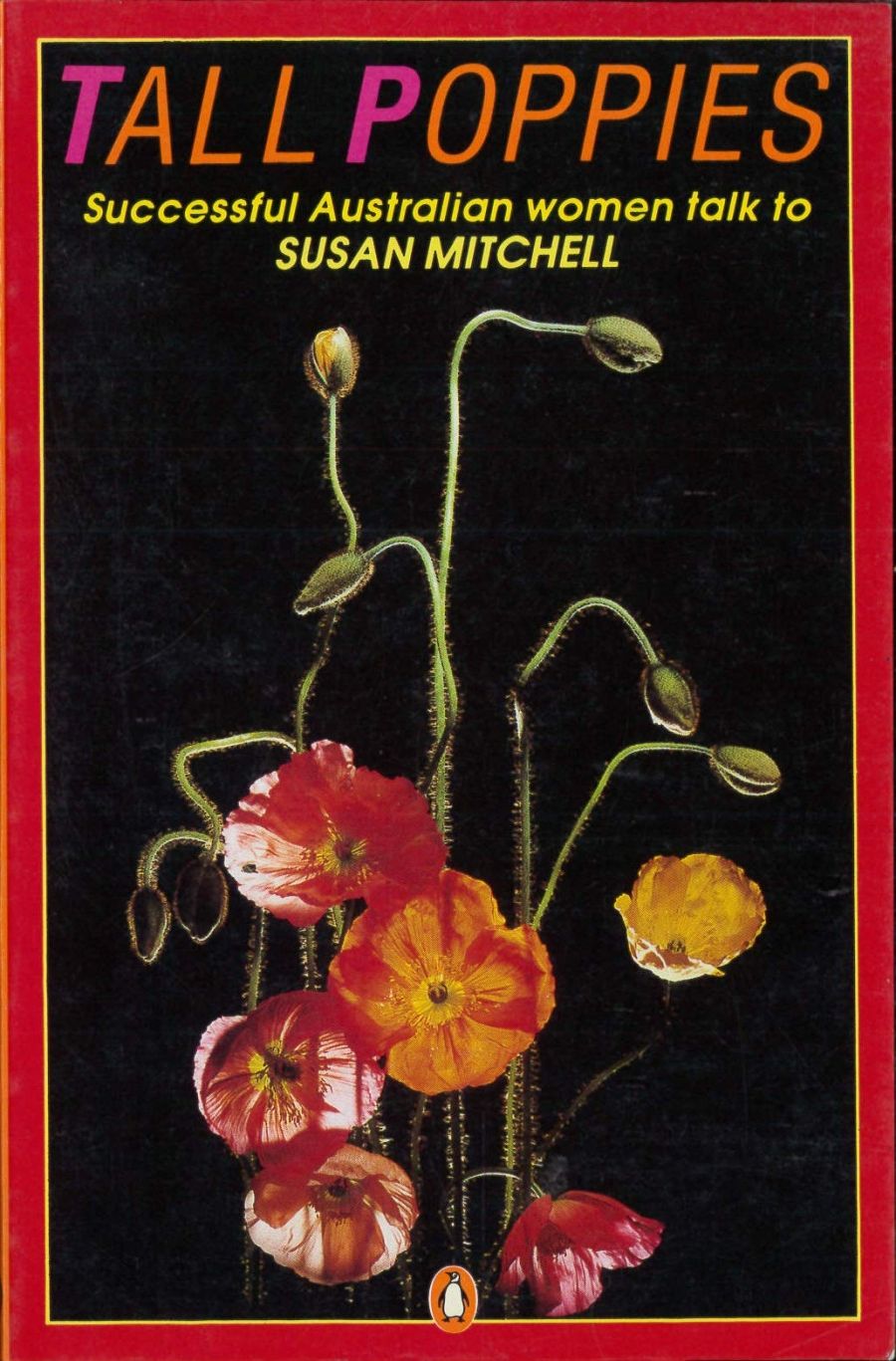
- Free Article: No
- Contents Category: Society
- Review Article: Yes
- Online Only: No
- Custom Highlight Text:
Tall Poppies is an addition to the literature of ‘women of achievement’. Susan Mitchell’s slim paperback, with its pretty cover photograph of Iceland poppies, is deliberately written in a ‘simple and conversational’ style because, she says, she wants to reach ‘as many people as possible’. But her audience is women only; this is a tract for our times. The nine tape recorded interviews with ‘successful’ women set out to celebrate what they have achieved in spite of the oppression of society, and to present inspiring ‘role models’ to women who read them. One wonders whether the effect will not be daunting rather than encouraging. Mary Breasley disclaims in a foreword that ‘the whole notion of women of achievement implies elitism’; but it must. These women have been picked out. We are asked, predictably, to notice their determination and persistence; but we can’t help seeing too their exceptional energy, talent, inventiveness and flexibility. And they are successful. Quite what this means is not considered. Most of the women have well-known names, they are women who ‘have the media on their backs’, as one of them, Beatrice Faust, says. Some are ‘Top Girls’, in Caryl Churchill’s phrase: they hold top jobs in the professions. But what constitutes success in that woman’s life who chooses to devote her energies to two (or more) goals: her family and her job? Women who don’t make it to the top are not necessarily failures, as Kathleen Fitzpatrick points out in her contributions to The Half-Open Door.
- Book 1 Title: Tall Poppies
- Book 1 Subtitle: Successful Australian women talk to Susan Mitchell
- Book 1 Biblio: Penguin, 160p., $6.95 pb
In comparison to that book Tall Poppies seems slighter and more sensational. In the Grimshaw and Strahan collection the women sat down, thought and wrote; here instead there is all the immediacy of the taped interview. Emotions are not recollected but relived in a highly emotionally charged tête-à-tête. The recollections are often painful. Pat Lovell recalls a childhood dogged by deaths, and her resentment of her mother’s not being able to understand her inability to find the right words to say. Old deep wounds are re-opened. Elizabeth Riddell talks of the death of her companion, and of the persistence of grief. What is disturbing here is the sense that the intimate situation of two women talking for some hours and arriving at a depth of personal revelation, on one side, has been perpetuated in print, and made public. The reader feels like an intruder on the speaker’s privacy, for while the women interviewed presumably gave their approval for what is printed, and Susan Mitchell thanks them for their generous frankness, the sense of intrusion remains.
Susan Mitchell clearly sees the achievements of some of these women as a direct result of their oppression by men. This is most true of the last section of the book, subtitled ‘They Struggled for Autonomy’. But the thesis seems to be a simplification. Maggie Tabberer, for instance, married at seventeen an older man who dominated her. The way she speaks of how she left him and worked and cared for her children doesn’t read like the shaking off of oppression so much as the inevitable growing up of a strong woman who had already begun an independent working life even when she was married. And as for Pat O’Shane, the first Aboriginal lawyer in Australia, and now head of the NSW Department of Aboriginal Affairs: it seems to be a misvaluation of her great emotional and intellectual capacities to imply that she got where she is now only as a reaction to oppression by men.
The real interest in this book is not in the way the women’s life stories illuminate some over-familiar notions about the oppression of women. In fact, at times, they contradict them. Pat Lovell says ‘If a woman has talent she’ll get there. But she has to be willing to fight’. The book’s value is as contemporary oral history, and the light it sheds on a range of social issues. Pat O’Shane’s story is outstanding, and is told with frankness. She admits to being humiliated and to being tough, and both result from the stark ugliness of her experiences with blacks and whites, men and women. Robin Nevin’s comments about being a woman acting in plays almost always directed by male homosexuals raises an issue which rarely receives serious attention. All through the interviews are fascinating incidental comments on immigrants in Australian society. Beatrice Faust rejoices to remember meeting European immigrant girls at school who put her in touch with a wide world she had only glimpsed in books before. Eve Mahlab explains how she felt the pressures to succeed as an outsider in a new society. Battling Joy Baluch, the mayor of Port Augusta, was driven to fight in the first place by the persistent humiliation heaped on the head of her immigrant husband. Mirna Stojanovic, the curator of the Adelaide University Museum who comes from Yugoslavia, writes movingly of the painful insults she endured at first and with compassion of the second generation of immigrant families, who are embarrassed by and ashamed of their parents.
In the end we have to admire these women in having reached the top in spite of a whole range of disadvantages – not just their genre – such as being black or foreign or poor or alone.


Comments powered by CComment